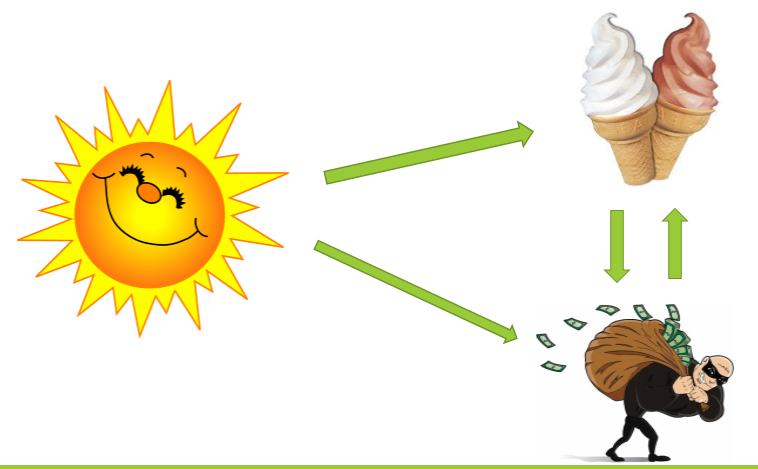Real-world Example In Which Hidden Variables May Be An Issue
Real-world examples of hidden variables are common in many areas of science and everyday life. For example, when conducting a study in the social sciences, researchers may not be aware of all the factors that could influence the outcome of the study. Hidden variables may include cultural values, personalities, past experiences, or any number of other factors that could have an influence on the data collected. In many cases, these variables may be difficult to measure or even detect and, as such, can lead to incorrect or incomplete results. In addition, hidden variables can also be an issue in fields such as economics or business, where decisions are made based on incomplete information or assumptions. In these cases, hidden variables can have a major impact on the accuracy of the decisions made and the results of the research.
Definition of Hidden Variables
Hidden variables are an important concept in statistics, particularly when it comes to analyzing data. In a nutshell, hidden variables are variables that are not measured or known in a data set. They are often latent, meaning they are not immediately observable or measurable. However, they can still have a major influence on the results of an analysis.
In a real-world example, hidden variables might include factors such as a person’s age, gender, or location. These variables may not be directly measured, but they could still be influencing the outcome of an analysis. For example, an analysis of sales data may show that certain products are more popular in certain areas. In this case, the area in which the product is being sold is a hidden variable.
In an effort to minimize the effects of hidden variables, statisticians often use control groups or random sample tests. Control groups are used to ensure that any changes in the data can be attributed to the variable being studied, rather than any other hidden variables. Random sample tests are used to ensure that data is randomly selected from the population and not biased in any way.
The importance of hidden variables cannot be overstated. They can lead to inaccurate results if left unaccounted for. Therefore, statisticians must take extra care to ensure that any hidden variables are identified and accounted for when conducting any kind of analysis.
Examples of Hidden Variables
Hidden variables are factors that can affect the outcome of a situation or experiment, but which are not taken into account in the analysis. While they may be difficult to identify, they can have a significant impact on results. Understanding hidden variables is important for accurately interpreting data and making sound decisions.
One real-world example of hidden variables in action is the stock market. Many investors make decisions based on historical data, without taking into account the potential impact of outside influences. Factors such as news events, changing sentiment, or even political events can have an effect on the stock market, but these variables are often overlooked or not taken into account.
Another example is in the field of medical research. While clinical trials are designed to measure the effects of a specific drug or treatment, the results may be affected by other factors such as the patient’s health history or lifestyle. If these variables are not taken into account, the results of the trial may not be reliable, leading to incorrect conclusions.
Finally, hidden variables are often present in the social sciences. Studies which look at the effects of poverty or crime, for example, may not take into account the influence of other factors such as education or access to resources. This could lead to incorrect conclusions about the causes and effects of the problem.
By understanding the potential impact of hidden variables, researchers and decision-makers can be more confident in their analyses and conclusions. Taking the time to consider such factors is essential for making sound decisions and understanding the true nature of a situation.
Impact of Hidden Variables
on Decision Making
Hidden variables can have a major impact on decision making. While these variables may not be immediately apparent, they can play a significant role in the outcome of any given decision. As such, it is essential to be aware of what they are, how they can affect decisions, and how to account for them.
Hidden variables are variables that are either not directly observable or not explicitly stated. They may be unknown or unacknowledged in a particular situation, as they can be difficult to detect. Although these variables may be hard to recognize, they can still have a significant effect on the decisions made.
For example, hidden variables could impact decisions in business operations. Companies often have to make decisions about hiring, firing, and product development. These decisions are often based on existing data or metrics, such as sales numbers or customer feedback. However, there may be other hidden variables at play, such as the current economic climate or the availability of new technology. If these variables are not taken into account, the decisions made can turn out to be wrong.
To ensure that decisions are sound, it is important to be aware of the potential impact of hidden variables. This can help to identify variables that may not be immediately obvious, and ensure that they are taken into account when making decisions. This is especially true in the current climate, where the economic and political landscape can change quickly. By being aware of potential hidden variables, companies can ensure that their decisions are well-informed and have the greatest chance of success.

Strategies for Identifying Hidden Variables
Hidden variables can be a thorny issue in many real-world scenarios, but they can also be difficult to detect. Identifying hidden variables requires a careful and systematic approach, as well as an understanding of the underlying data and the possible implications of the variables. In order to identify hidden variables, it is important to understand the research question and the context of the data. This can help to identify potential variables that may not have been considered. Additionally, it is important to consider the data collection process, as this can introduce errors or bias into the data. Additionally, data analysis techniques such as regression analysis, correlation analysis, and factor analysis can be used to identify hidden variables. Finally, it is important to consider the implications of the hidden variables and how they may affect the results of the study. By utilizing a systematic approach, researchers can effectively identify hidden variables and ensure that their results are accurate and reliable.
Mitigating the Impact of Hidden Variables
Hidden variables, such as unknown biases or confounding factors, can lead to inaccurate conclusions in data analysis. The best way to ensure accurate results is to identify and account for these hidden variables. Understanding the potential impact of hidden variables is key to making informed decisions and ensuring the most reliable data.
One way to identify hidden variables is to look at the data from multiple angles. For example, if you are analyzing customer behavior, you could look at the data from the perspective of the customer, the product, the company, and so on. By looking at the data from different perspectives, it can help to identify potential hidden variables that may be influencing the data.
Another way to mitigate the impact of hidden variables is to use predictive analytics. Predictive analytics uses machine learning algorithms to identify patterns and trends in data. By using predictive analytics, you can accurately identify hidden variables and make better decisions based on those variables.
Finally, it is important to have a plan for how to respond to hidden variables. Once you have identified the potential impact of hidden variables, it is important to have a plan for how to respond to those variables. This could include changing your data analysis approach, adjusting the parameters of your predictive analytics, or even changing the data set itself.
Overall, hidden variables can have a significant impact on data analysis. Taking the time to identify and mitigate the impact of hidden variables can help ensure that the conclusions drawn from data analysis are accurate. By using predictive analytics and having a plan for how to respond to hidden variables, organizations can gain a better understanding of their data and make more informed decisions.
Conclusion
Hidden variables are often overlooked when analyzing data sets. In some cases, hidden variables can have a significant effect on the results of a study or analysis. To avoid potential bias or unexpected results, it is important for data analysts to be aware of and consider the potential impact of hidden variables. Taking the time to identify and account for hidden variables can help ensure that data analysis is accurate and that results are reliable. This is particularly important in fields such as healthcare, finance, and economics, where decisions made based on data analysis can have major implications and consequences. By taking the time to consider the potential impact of hidden variables, analysts can ensure that their data analysis is sound and their results are reliable.
FAQs About the Real-world Example In Which Hidden Variables May Be An Issue
Q1. What is a real-world example of hidden variables?
A1. A real-world example of hidden variables could be in an online survey where respondents are asked to rate a product. The survey may not be able to determine the individual characteristics of each respondent that could influence their rating, such as prior experience with the product or their cultural background. These characteristics are hidden variables that could be influencing the ratings.
Q2. Why are hidden variables an issue?
A2. Hidden variables can be an issue because they can skew the results of a survey or experiment. If the hidden variables are not taken into account, then the results may not accurately reflect the true opinion or result.
Q3. How can hidden variables be addressed?
A3. Hidden variables can be addressed by controlling for them in the experiment or survey. This can be done by randomly assigning subjects to different groups to account for any potential differences in the results. Additionally, surveys can be designed to account for hidden variables by including questions about the individual characteristics that could be influencing the results.
Conclusion
Hidden variables can be an issue in many real-world scenarios, such as in medical research or financial forecasting. In medical research, hidden variables can be difficult to identify and measure, leading to inaccurate results and conclusions. In financial forecasting, hidden variables such as economic or political changes can also lead to inaccurate predictions. In both cases, it is important for researchers and analysts to take into account all potential hidden variables in order to obtain accurate and reliable results.





